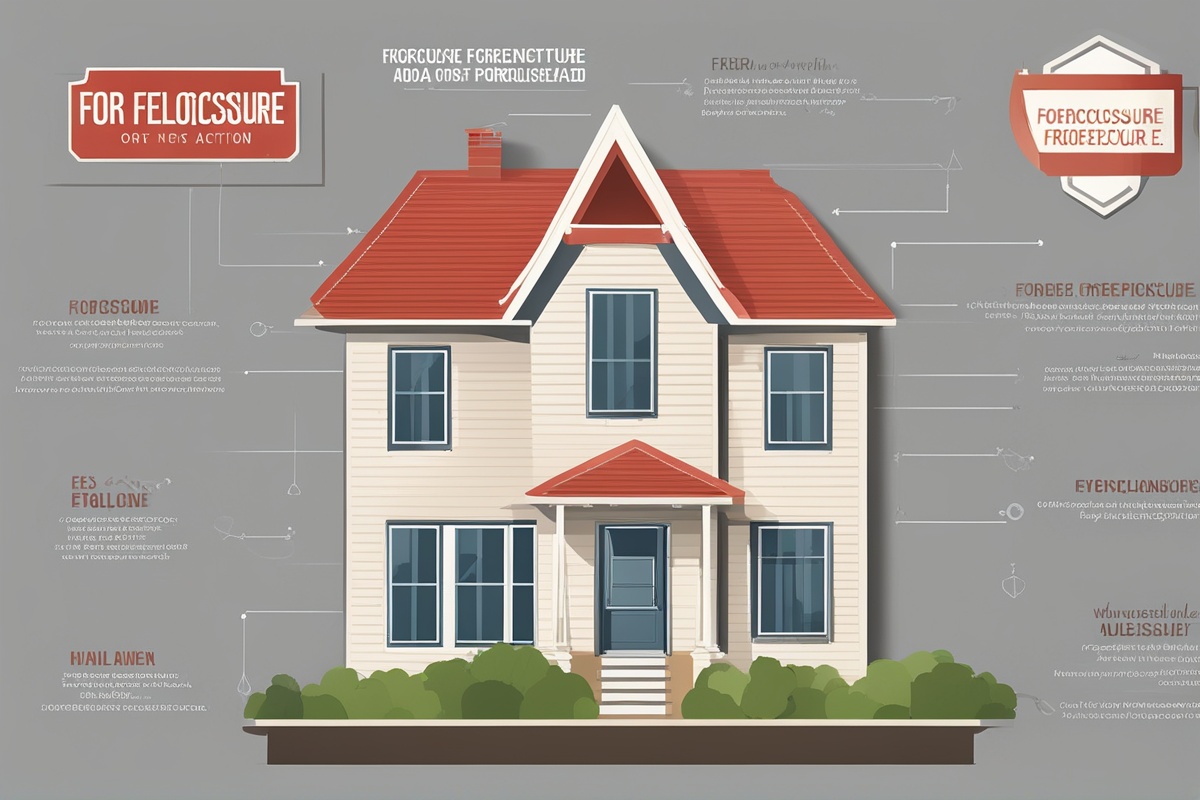Home repossession, often referred to as foreclosure in many regions, is a distressing process that homeowners may face when they are unable to keep up with mortgage payments. Understanding the home repossession process is crucial for anyone who owns a home or is considering purchasing one. This guide will walk you through the key stages of repossession, the legalities involved, and what you can do to potentially avoid losing your home. By gaining a clear perspective on this process, you can better prepare yourself to navigate financial challenges and protect your property.
What Is Home Repossession?
Home repossession is a legal process where a lender, such as a bank or mortgage provider, takes ownership of a property due to the homeowner’s failure to meet mortgage repayment obligations. This typically occurs after a prolonged period of missed payments, and the lender decides to recover the outstanding debt by selling the property. Understanding the home repossession process begins with recognizing that it is often a last resort for lenders, as they generally prefer to work with borrowers to find alternative solutions. However, if communication breaks down or financial struggles persist, repossession becomes a real risk.
The Stages of the Home Repossession Process
The home repossession process typically unfolds in several distinct stages. While the exact timeline and procedures can vary depending on the country or state, the general framework remains similar. Here’s a breakdown of the key steps:
- Missed Payments: The process often begins when a homeowner misses one or more mortgage payments. Lenders usually send reminders or notices at this stage.
- Notice of Default: If payments remain unpaid, the lender may issue a formal notice of default, signaling their intent to take further action.
- Pre-Foreclosure Period: This is a grace period in some regions where homeowners can attempt to resolve the debt, either by catching up on payments or negotiating with the lender.
- Legal Action: If no resolution is reached, the lender may file for repossession or foreclosure through the court system, depending on local laws.
- Eviction and Sale: Once the court grants repossession, the homeowner may be evicted, and the property is sold, often at auction, to recover the lender’s losses.
Understanding the home repossession process at each stage can help homeowners identify opportunities to intervene and potentially save their property.
Legal Rights and Protections for Homeowners
Homeowners facing repossession are not entirely without recourse. Many countries and states have laws in place to protect borrowers during financial hardship. For instance, some regions require lenders to offer mediation or counseling before proceeding with repossession. Additionally, homeowners may have the right to redeem their property by paying off the outstanding debt, even after legal proceedings have begun. It’s essential to research local regulations or consult with a legal professional to understand your rights. For more information on homeowner protections, check out our detailed guide on Foreclosure Rights and Protections.
Options to Avoid Home Repossession
While the prospect of losing your home can be overwhelming, there are several strategies to avoid repossession if you act early. Understanding the home repossession process empowers you to take proactive steps, such as:
- Communicating with Your Lender: Many lenders are willing to negotiate payment plans, loan modifications, or forbearance agreements to help you stay in your home.
- Seeking Financial Assistance: Government programs, nonprofit organizations, and local charities may offer grants or loans to help cover mortgage payments during tough times.
- Selling the Property: If keeping the home is no longer feasible, selling it yourself before repossession can help you avoid a negative impact on your credit score.
For additional strategies, explore our post on Tips to Avoid Foreclosure for actionable advice tailored to homeowners in distress.
The Impact of Repossession on Your Financial Future
The consequences of home repossession extend far beyond the loss of property. A repossession or foreclosure can severely damage your credit score, making it difficult to secure loans, rent a home, or even find employment in some cases. Additionally, if the property sells for less than the outstanding mortgage balance, you may still owe the difference, known as a deficiency balance, depending on local laws. Understanding the home repossession process includes recognizing these long-term effects and taking steps to mitigate them. Learn more about rebuilding your credit after repossession in our guide on Recovering Credit Post-Foreclosure.
How to Prepare for Potential Repossession Risks
Prevention is always better than cure when it comes to home repossession. To safeguard your home, consider building an emergency fund to cover mortgage payments during unexpected financial setbacks. Regularly review your budget to ensure you’re not overextending yourself, and stay informed about your mortgage terms and conditions. If you’re already struggling, don’t hesitate to seek professional advice from a financial counselor or housing advocate. For a deeper dive into financial planning for homeowners, read our article on Financial Planning for Homeowners. Additionally, understanding local market trends can help; check out our insights on Housing Market Forecasts to stay ahead of potential risks.
Disclaimer: The information provided in this article is for general informational purposes only and should not be construed as legal, financial, or professional advice. Home repossession laws and processes vary widely by region, and individual circumstances may differ. We strongly recommend consulting with a qualified attorney, financial advisor, or housing counselor to address your specific situation before making any decisions related to home repossession or foreclosure.
References
- U.S. Department of Housing and Urban Development – Avoiding Foreclosure
- Consumer Financial Protection Bureau – What is Foreclosure?
- Federal Reserve – Foreclosure Resources
- Nolo – Understanding the Foreclosure Process
- Citizens Advice (UK) – Repossession Guidance
This content is for informational purposes only and not a substitute for professional advice.





